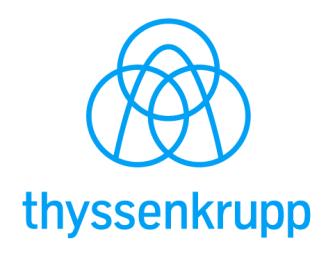Refining References

OMV Petrom S. A.
Ploiesti, Romania (Completion 2014)
Capacity: 4.2 million MTPA
Replacement of heater tubes and instrumentation, crude transfer line, corrosion monitoring system and atmospheric column nozzle
Scope: Extended study, DE, construction supervision and commissioning

Shell Deutschland Oil
Rheinland Raffinerie Godorf, Germany (Completion 2013)
Capacity: 12,500 MTPD
CDU Revamp – retrofit to process crude oils with higher acidity and mercaptane content
Scope: Study, BE, AE, EPCM

BAYERNOIL
Vohburg / Danube, Germany (Completion 2013)
Capacity: 168 t/d
Refinerygas treatment, Relocation

BAYERNOIL
Neustadt / Danube, Germany (Completion 2012)
Capacity: 600 t/d recycle gas, 50 t/d hydrogen
Amine absorption, Membane separation
Indian Oil Corp. Ltd
Paradip Refinery, Orissa India (Completion 2012)
Capacity: 15,000 tpd Vacuum gas oil /, 15,000 tpd gas oil / coker diesel
EPCM
Licensor Axens / Shell Global
Pemex
Cd. Madero, Minatitlan and Salina Cruz, Mexico (Completion 2011)
FEED for 3 new plants and 6 revamps
Licensor Axens

Grupa LOTOS
Gdansk, Poland (Completion 2010)
Capacity: 10.5 million tpa (expanded from 6 million tpa)
Integrated Atmospheric and Vacuum Sections Reduce CO2; Extended BE and Commissioning Services
Indian Oil Corp. Ltd
Gujarat Refinery, Baroda, India (Completion 2010)
Capacity: 6,000tpd diesel feed Vacuum gas oil
EPCM
Licensor UOP

GCW Anshang I&S Group Co.
Anshan, China (Completion 2009)
Capacity: 100,000 MTPA benzene, 20,000 MTPA toluene, 8,000 MTPA xylenes
Feed from coke oven light oil
Morphylane
license + E + P

Caltex Australia
Lytton, QLD Australia (Completion 2009)
Capacity: 3,000tpd diesel
FEED plus EPCM
Licensor Haldor Topsoe

Petrom SA
Brazi, Romania (Completion 2009)
Capacity: 492tpd light cracked naphtha
FEED plus EPC
Licensor Axens

Shell
Clyde, NSW Australia (Completion 2009)
Capacity: 3,500tpd diesel feed
FEED plus EPCM
Licensor Shell Global Solutions

Shell Deutschland Oil GmbH
Hamburg, Germany (Completion 2009)
Capacity: 7,200tpd gas oil
Revamp of Existing Fuel Oil Hydrodesulphurisation
Licensor Shell Global Solutions

Soukhna Refinery and Petrochemicals Co
El Ain El Soukhna, Egypt (Completion 2009)
Capacity: 208,000 BPSD
CDU and VDU; Conceptual Design and FEED
Licensor Shell Global Solutions, Axens

Ruhr Oel GmbH
Gelsenkirchen-Horst, Germany (Completion 2007)
Capacity: 3,140 MTPD
Technology: Uhde
Scope: LSTK

PCK Raffinerie GmbH
Schwedt, Germany (Completion 2006)
Etherification of naphtha with bio-ethanol; LSTK
Licensor Neste Jacobs Oy

PCK AG
Schwedt, Germany (Completion 1992 – 2006)
Scope of Services: Refinery modernization
Technologies: CDU, VDU, MTBE, ETBE, Isomerization etc.

Shell Deutschland Oil
Heide, Germany (Completion 1994 / 2005)
Capacity: 90 MTPD
Technology: Uhde
Scope: E for ETBE conversion, EPCM for new MTBE unit

PCK Raffinerie GmbH
Schwedt, Germany (Completion 1993 / 2004 / 2005)
Capacity: 1,440 MTPD
Technology: Uhde
Contract: E for ETBE conversion, EPCM for new MTBE unit

Wilhelmshavener Raffineriegesellschaft (WRG)
Wilhelmshaven, Germany (Completion 2004)
Capacity: 13,000 MTPD
Technology: VDU
Scope: BE + EPC LSTK

Erdöl-Raffinerie-Emsland
Lingen/Germany (Completion 2003)
Capacity: 720 MTPD light naphtha
Technology: UOP
Contract: E - Revamp

Holborn Europa Raffinerie GmbH
Hamburg, Germany (Completion 2003)
Capacity: HDS: 1,038 MTPD, Reformer: 2,712 MTPD, Extr. Dist.: 183 MTPD, Cyclohexane: 129 MTPD
Technologies: Axens, Uhde
Scope: EPCM

Turkmenbashi Refinery
Turkmenbashi, Turkmenistan (Completion 2001)
New lube oil plant with integration and modernisation of existing vacuum distillation unit
Licensor thyssenkrupp Uhde
Rafineria Gdanska
Gdansk, Poland (Completion 1995)
Capacity: 720tpd
Basic Engineering (Revamp)




